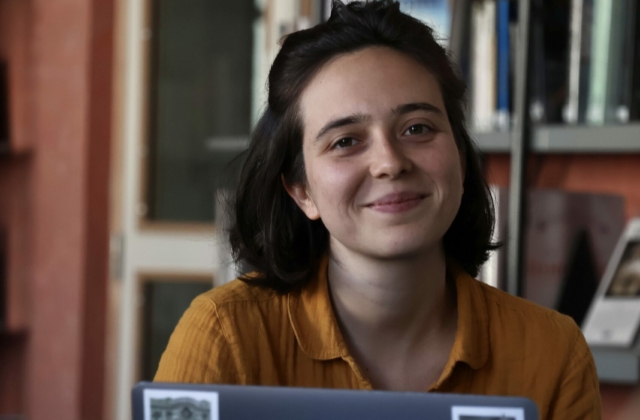Project title
The places that we grant to the dead
Project description
Andréanne’s curatorial practice explores thematically the inconsistencies of the capitalist system and logistical thinking through confrontations with pre-modern historical periods, particularly the Middle Ages. Such transhistorical approach allows new narratives and counter-discourses to emerge from the shadows of History, enlightened through the collaboration with artists.
Her desire to adopt a critical position on the capitalist model is sustained by transdisciplinary researchs that meet specific places and contexts. The architectural prism led her to have a closer look at the Netherlands, where the functionalist movement was particularly active, driven by the Amsterdamse School and around such major figures as Gerrit Rietveld, Jacobus Oud, Johannes Duiker, Cornelis van Eesteren, Michiel Brinkman, and Leendert van der Vlugt. At the time, these architects had to respond to a pressing need for housing under overpopulation and capitalist expansion in the most constrained Dutch urban centres. Their social housing complexes were strictly optimised, with a certain ideology of efficiency mixed with a utopia of a renewed way of living together.
To go a step further, this pressure on available urban public space to accommodate ever-growing populations is not confined to real estate construction, nor is it confined to the living population. The dead and their cemeteries are also subject to this spatial saturation, and competition for available space is exerted between the living and the dead.
Thus, in the conception of profitability and industrial rationality that motivated Dutch functionalism, the question of death – which could have arisen with outgoing flows considerations – seems totally absent from architectural theories and realisations.
Béguin wanders how to explain the disappearance of cemeteries and dead people in projects that were aimed at being innovative in community-based management. Why is it still the case today? In Amsterdam, for example, the canals prevented the digging of graves, so cemeteries were relegated to the city’s limits. Already in the Middle Ages, Amsterdam’s dead were more often burned than buried, a singular counterexample to a period when cemeteries were true urban hearts. A lot of sociability practices took place there: markets, games, fairs, and judicial or political decision-making assemblies. These medieval solidarity places directly question the values and organisations of the civilisations that succeeded the Middle Ages, right up to our own. Indeed, the way in which societies constructed the place of their dead speaks about their hierarchy of values, the care and attention paid to the individuals – both living and dead – who make up those societies.
With a focus on Dutch context through the ages, She will initiate an analysis of the places – geographical, symbolic, narrative, artistic, spatial, and mental – that we grant to the dead, whether individual or collective, and how this can reconfigure our social relationships in the broadest sense.
